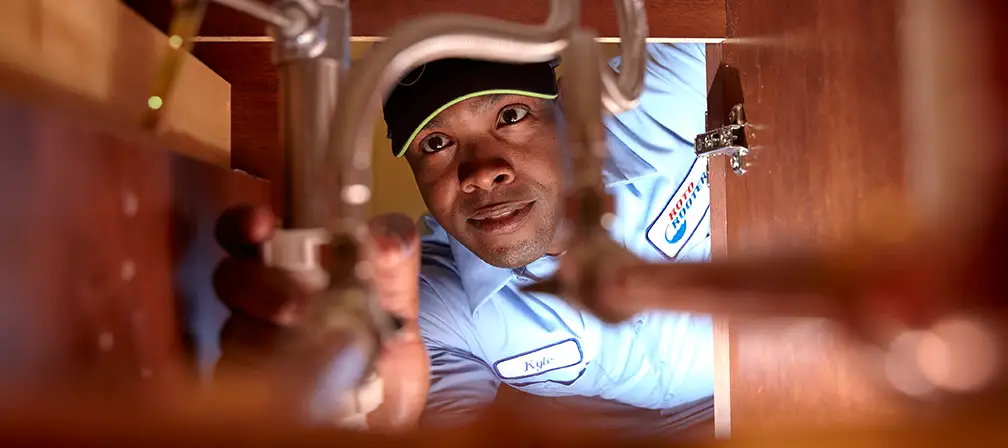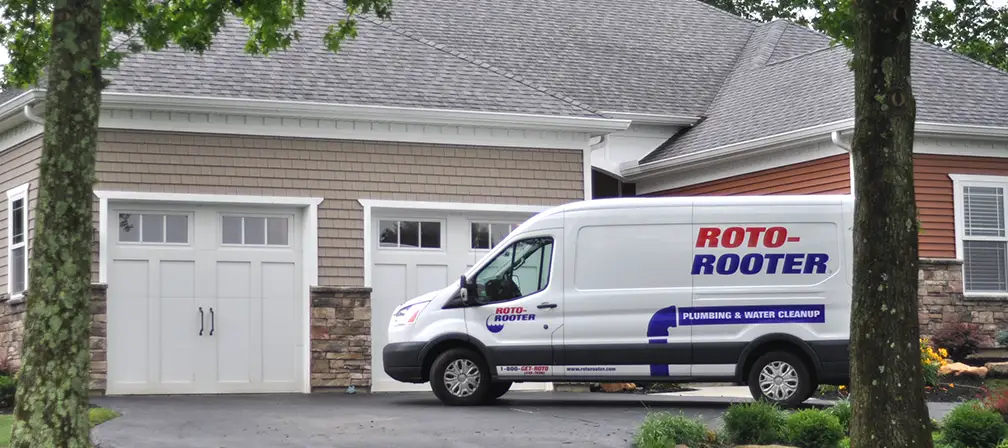1. Turn off your water supply.
Shutting off the water supply is the first step in any water emergency that involves a broken pipe or overflowing plumbing fixture. If a broken sink faucet is an issue, you can often find a shut-off valve beneath the sink, which allows you to shut off water to the sink while maintaining water flow to other areas of your home or business. Likewise, toilets often have a shut-off valve under them. Turn these valves clockwise to shut off the flow of water.
For more serious water emergencies, shut off the main water shutoff valve. For residential properties, the main shutoff valve is usually near the front of the home, though it may also be in the garage, by the water meter, or in a closet. Turning the valve clockwise halts the water supply to the entire building. It’s a good idea to know where your main shutoff valve is before there’s a plumbing emergency. In commercial buildings, shutoff valves are generally located along the perimeter or against outer walls. Familiarize yourself with your shutoff valve's location.
Warning: If your electrical power is active, do not enter flooded areas to reach water main valves. Instead, avoid the area and warn your plumber of the possible danger. They will know what steps to take.
2. Shut off power and gas if it’s safe to do so.
Water and electricity are a dangerous combination. Only turn off the electricity and gas supply if you can do so safely. Otherwise, exit the water-affected zone and let a professional plumber or electrician handle the power and gas shutoff. It may also be necessary to alert your utility company.
3. Turn off the water heater.
Turn off the water heater if you can reach it safely during a water emergency. Leaving the heater on in a flood zone raises the risk of the damage to the appliance that may be unrepairable. If the water level inside an electric water heater tank gets too low, the heating element can burn out. It can cause the water heater to overheat and even cause damage to the tank.
4. Identify the water source.
Try to locate the origin of the leak or flood. While some water sources are evident, such as an overflowing toilet, others are well hidden. Small leaks are hard to detect, and broken pipes might be concealed within walls, floors, or ceilings.
5. Contain the damage.
Swift action lessens the potential for severe damage during a water emergency. Use buckets to catch water from leaky pipes and shut off the water main to prevent flooding. For minor floods, like overflowing sinks, use towels to absorb moisture.
6. Clear the surrounding area.
If possible, physically clear the plumber’s route to the water problem by emptying under sink cabinets or moving furniture. Clearing the affected area also has safety applications: keep people away from sewage backups, floods, or situations where water interacts with electricity.
7. Call an Emergency Plumber.
Homeowners and commercial building maintenance workers can often handle minor plumbing issues but should refrain from attempting DIY solutions during serious water emergencies. Well-intentioned efforts can worsen the situation, complicate insurance claims, and even endanger individuals. When you need an emergency plumber in Houston, reach out to Roto-Rooter. We provide swift assistance and practical solutions. Explore 4 Reasons You Need an Emergency Plumber for more information.



